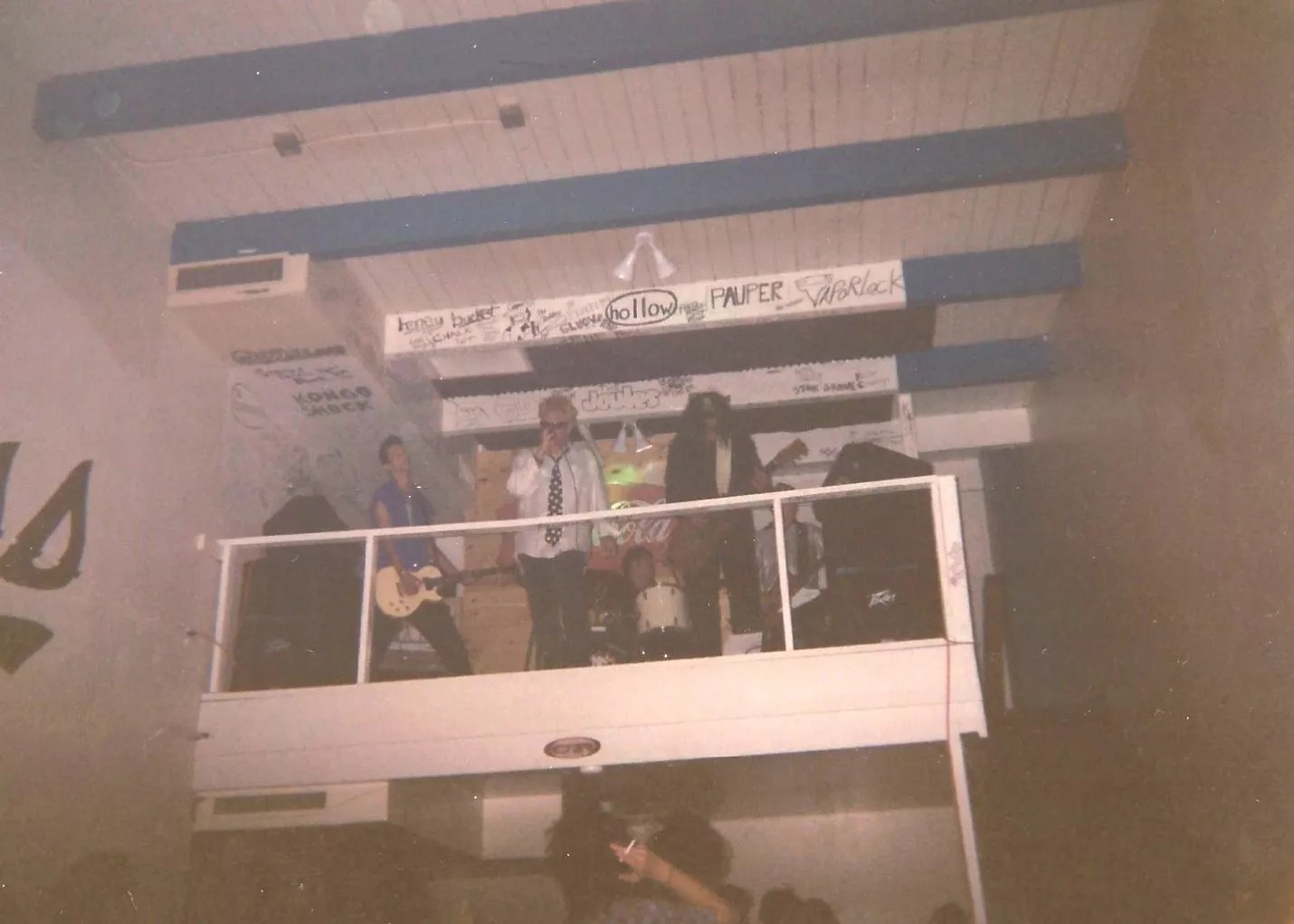
Courtesy Jason LeValley

Audio By Carbonatix
Anyone hoping to understand live music in Phoenix has to know a venue that closed its doors nearly a quarter-century ago. Cannery Row was more than just a Tempe bar. It was equal parts beloved hangout and and chaotic incubator for the local music scene.
When you walked through the front door into the long, narrow space, you saw a pool table in the center and a wooden loft at the back end. On the right were some electronic dart boards and, further back, a single staircase leading to the loft. The interior was painted white, which made for an unexpectedly bright experience. On the left was the bar itself, manned by the garrulous owner Greg Smutnak, a clean-cut, brown-haired guy built like a linebacker. The pub had a great vibe. Friendly. Unpretentious.
When Smutnak, a native Chicagoan and a barber, bought it in 1992, the space at 405 S. Forest was a frat bar. He turned it into a working-class refuge known for offering cheap beers at a time when Tempe was starved for a blue-collar joint. “We were doing, like, those $1 beers, and everybody thought I was crazy, selling cans of beer,” he says. “I was the first one to do Schlitz and Pabst and all that.”
Another draw was his hired help. Smutnak, who continued to cut hair by day, consistently hired attractive women bartenders to serve the budget brews.
This year, make your gift count –
Invest in local news that matters.
Our work is funded by readers like you who make voluntary gifts because they value our work and want to see it continue. Make a contribution today to help us reach our $30,000 goal!
“They were pretty hot,” he says straightforwardly. “And bands were coming in from different areas saying, ‘Yeah, I heard this guy’s got really cute girls working there.'” Phoenix band Dead City Love performs in the infamous Cannery Row loft space circa 1996. Courtesy Jason LeValley
Any band who asked to play there was given a chance. No credentials needed to launch yourself from Cannery Row.
In 1995, I approached Smutnak about booking bands there. It was a great opportunity for me to do something I believed in – promoting the Valley’s exceptional local music while also making a little extra cash. At the time, only a handful of acts, mostly surf-rock, played there on a revolving basis. Smutnak, a Beach Boys obsessive, recalls now that among them were the Del Vamps, the Brake Men, and the Medieval Knievels.
As a scenester and a writer for a local music mag, I had the connections to bring in tons of bands: Autumn Teen Sound, the Stumbles, the Piersons, Vaporlock, the Keltic Cowboys, Zen Lunatics, Freudian Slip, Gene Pool, Kongo Shock, Stone Groove, the Cheddars, Serene Dominic and the Semi-Detached, to name a dozen. As those bands drew crowds, more people learned about this curious little tavern. When I took a patron’s suggestion to book a bluegrass/country band called Flathead I couldn’t believe the crowd that turned out. The place was packed wall-to-wall, with a line of people waiting to get in like it was Space Mountain.
The bands played on the white wooden loft overlooking the audience. The closer you were to the stage, the more you had to crane your neck to see the show. Many nights I went home barely able to turn my head.
After gigs, bands signed their name to the loft. Eventually the balustrade became so full of signatures that bands had to scribble their names on the wall and even the ceiling.
The bar had just one bathroom, which was smaller and more cramped than a port-a-potty. The door opened just enough to clear the urinal, which Smutnak says he installed without a permit, and only because the city said he had to have one.
But the location of the loo – also on the rickety loft – meant that anyone who had to go during a set had to climb the solitary staircase and cross the stage, sliding behind the performers. Those who had to sit claimed the toilet thumped rhythmically to every note emanating from the bass drum and amps. Inside Cannery Row, foreground from left: Power Pop Pat (McWilliams), Adrian Evans, the author, and Pat Singleton. Owner Greg Smutnak is behind the bar at right. Courtesy Jason LeValley
Smutnak remembers the Gin Blossoms and Jimmy Eat World hanging out there, which was a good indication that the bar had become part of the infrastructure of Tempe’s 1990s alt-rock explosion.
“We considered this place to be our Cavern Club – to be a little corny,” says Mike Dunn, a guitarist who played many times at the Cannery with his band Thee Oh Nos. He mentions a show involving Jay Reatard, a garage-punk multi-instrumentalist who died in 2010 of a cocaine overdose. “He bashed himself in the head with the microphone and then leapt from the loft onto the bar below,” Dunn says. “This was an act that was not cool with Greg, as you might imagine.”
One night, Chester Bennington came by. He was 20, but after seeing him perform with Grey Daze weeks earlier, I knew he was destined for something bigger. The dude just oozed star power – so I let him in. I also booked Grey Daze at Cannery Row, but they never played. Their manager pulled them out, saying they had a major label audition. When I tried to reschedule them, Bennington had already become too hot a commodity.
Cannery Row closed its doors for good on Friday, August 31st, 2001. The landlord, who owned most of the block, jacked up the rent to about three times what it had been. And Tempe was never the same again. It was a killer insight in 1992 to open a cheap-beer rock den. More than 30 years later, the idea is once again waiting for someone to pick it up and run.